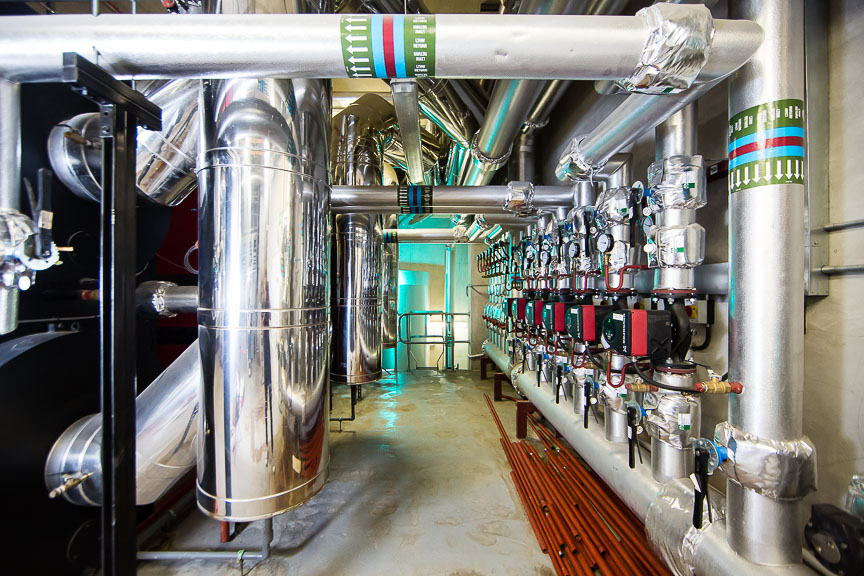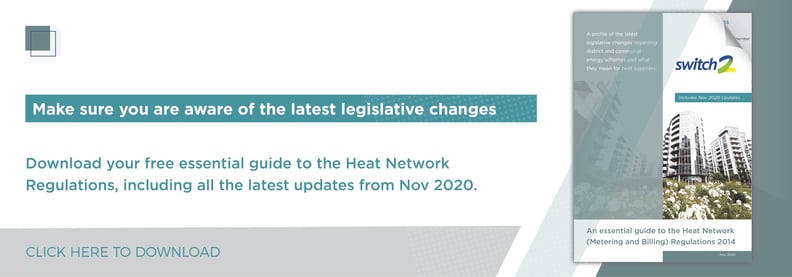Heat network operators and stakeholders have been eagerly awaiting news of updates to the Heat Network Regulations. On Friday, 6 November 2020, The Department for Business, Energy & Industrial Strategy (BEIS) laid the Amendments before Parliament. This updated legislation will come into force on Friday, 27 November 2020.
There is a 12 page document which clearly goes through all the changes that have been made to the Regulations. At a high level, these are the main amendments heat network operators need to be aware of, understand and act on.
- Cost effectiveness tool release – impacting operators with unmetered schemes. The long-awaited cost-effectiveness/feasibility tool developed by BEIS, will be released. This allows operators of currently unmetered networks to assess whether or not they are required to install metering devices into these schemes. A further addition is the introduction of new building classes (viable, open and exempt) and stipulation that the cost-effectiveness tool will need to be completed in respect of all buildings that fall into the ‘open’ class. This, we believe, is intended to make it clearer which buildings have an option for feasibility analysis, and which building types may be exempt.
- Confirmation on deadlines. Deadlines for the cost effectiveness assessments and subsequent required meter installations have been confirmed as:
- Cost-effectiveness tools to be completed by 27th November 2021 – if your building falls within the ‘open’ class and you want to test the financial and technical feasibility of the scheme, you need to have completed this by 27th November 2021.
- Meter and / or heat cost allocators to be installed by 1st September 2022.
- Revised heat network notification template. A new template has been released which will allow operators to identify networks that meet the criteria of newly-created metering and billing exemptions. BEIS has also announced there will be a delay to the requirement for submitting the re-notification template during this ‘transition period’ (from 27 November 2020, when the amendments come into force, to 1 September 2022), for the networks that are due to be re-notified in this period, to allow the heat suppliers to comply with the introduced changes.
- Submissions. The obligation that notifications must be submitted in the updated format approved by The Office for Product Safety and Standards (OPSS).
- New website. OPSS is redesigning its website which will launch on 27th November 2020. It will be fully updated to include all the latest documentation and make it simpler for heat network operators to access the information they require to comply with the Regulations. The website link is www.gov.uk/guidance/heat-networks.
What do heat network operators need to do now?
- Bookmark gov.uk/guidance/heat-networks and download all the documents
- Sign up for updates to keep up with any changes
- Be aware of changes to notifications – new template and requirements
- Review schemes which are unmetered (final customer) and classify them (open, exempt, viable)
- If your schemes are classified as ‘open’ you need to use the tool to test feasibility before 27th November 2021
- Speak to your metering and billing partner for support
The introduction of Heat Metering and Billing can save up to 40%, compared to unmetered schemes, by changing behaviour and reducing waste. To find out more and read case studies speak to us now.
Useful links:
www.gov.uk/guidance/heat-networks
Government response https://assets.publishing.service.gov.uk/government/uploads/system/uploads/attachment_data/file/933211/hmbr-2020-government-response.pdf



